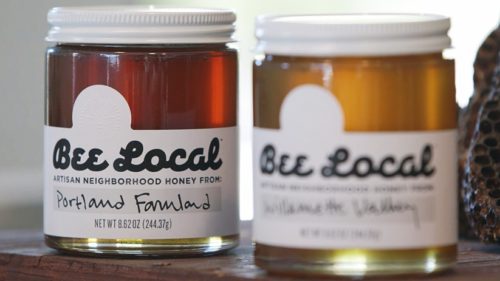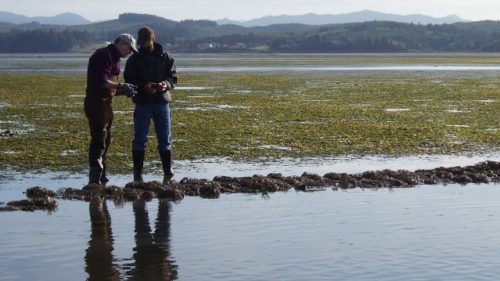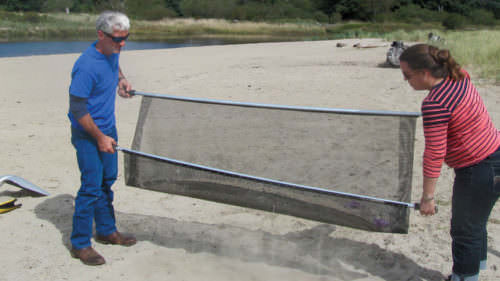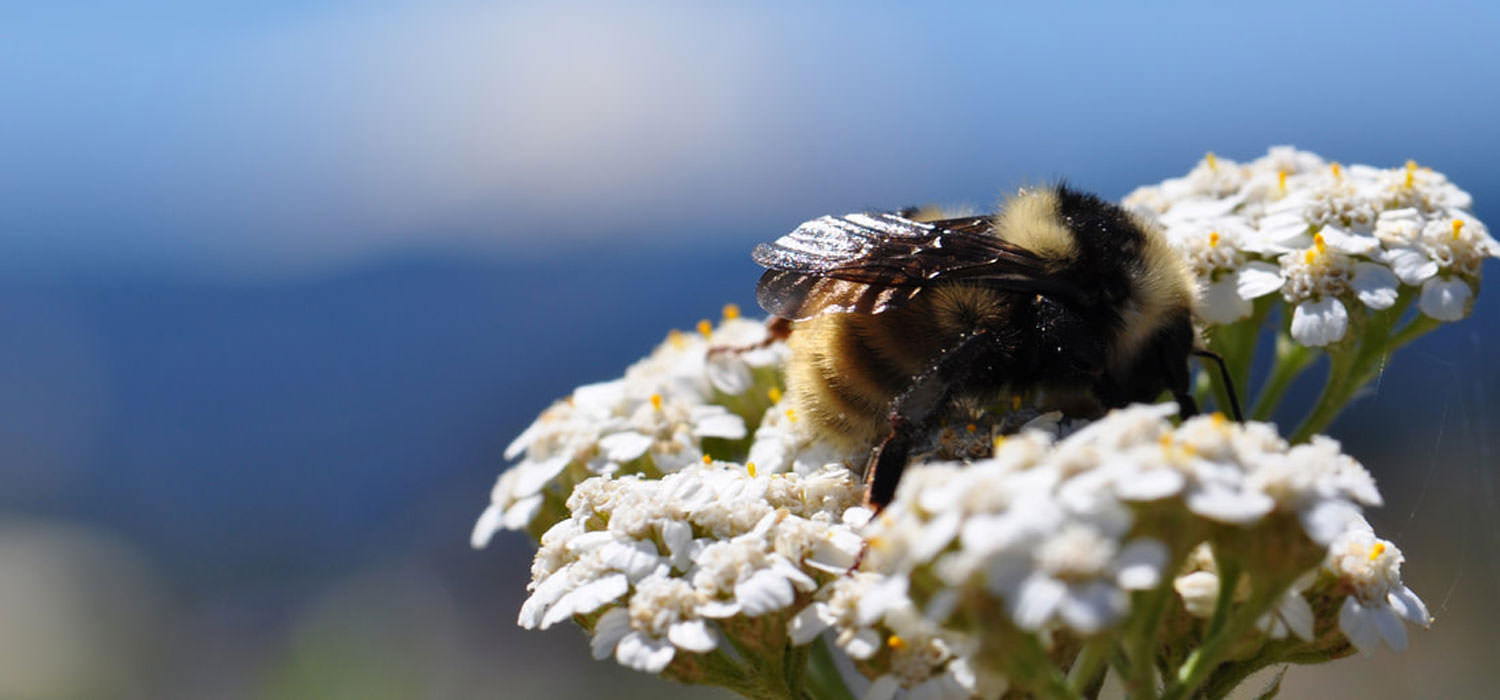
On a regular hiking day, I’d stride along the Pacific Crest Trail as it hugs the shore of Wahtum Lake — a small teardrop of green water burrowed into the Mark O. Hatfield Wilderness. I’d have my eye on the ridgeline of Chinidere Mountain, which offers stunning views of Mt. Hood, Mt. Jefferson and their sister volcanoes from the top. I’d be mentally clocking the alpine miles I’m covering as another athletic notch in my belt. But it’s not that kind of day. Instead, I’m walking slowly with my eyes trained on the ground. I’m noting the wildflowers scattered along the path — huckleberry blossoms, bear grass and avalanche lilies. I’m “wandering” through this patch of woods, which is exactly what the Pacific Northwest Bumble Bee Atlas project says I should do in my role as citizen scientist. Here in the Mount Hood Wilderness, I scan the woods for furry winged bodies as part of the organization’s tri-state effort to survey the habitat of these important and often unrecognized pollinators.
The Pacific Northwest Bumble Bee Atlas, launched in April, is a coordinated effort among the Portland-based Xerces Society for Invertebrate Conservation, Oregon State University, the Oregon Department of Agriculture, the Washington Department of Fish and Wildlife and the Idaho Department of Fish and Game. The goal is to complete a comprehensive survey of the three states to better understand where bumble bees live and what plants they live on. The data will be used to protect existing habitat and create new bee-friendly environments.
“We’ll use the information we can glean to understand the habitats, plant species and landscapes that are important for bumble bees,” says Rich Hatfield, Senior Conservation Biologist with the Endangered Species Program at Xerces. “We can make science-based recommendations for restoration of plants beneficial to bumble bees and other pollinators.”
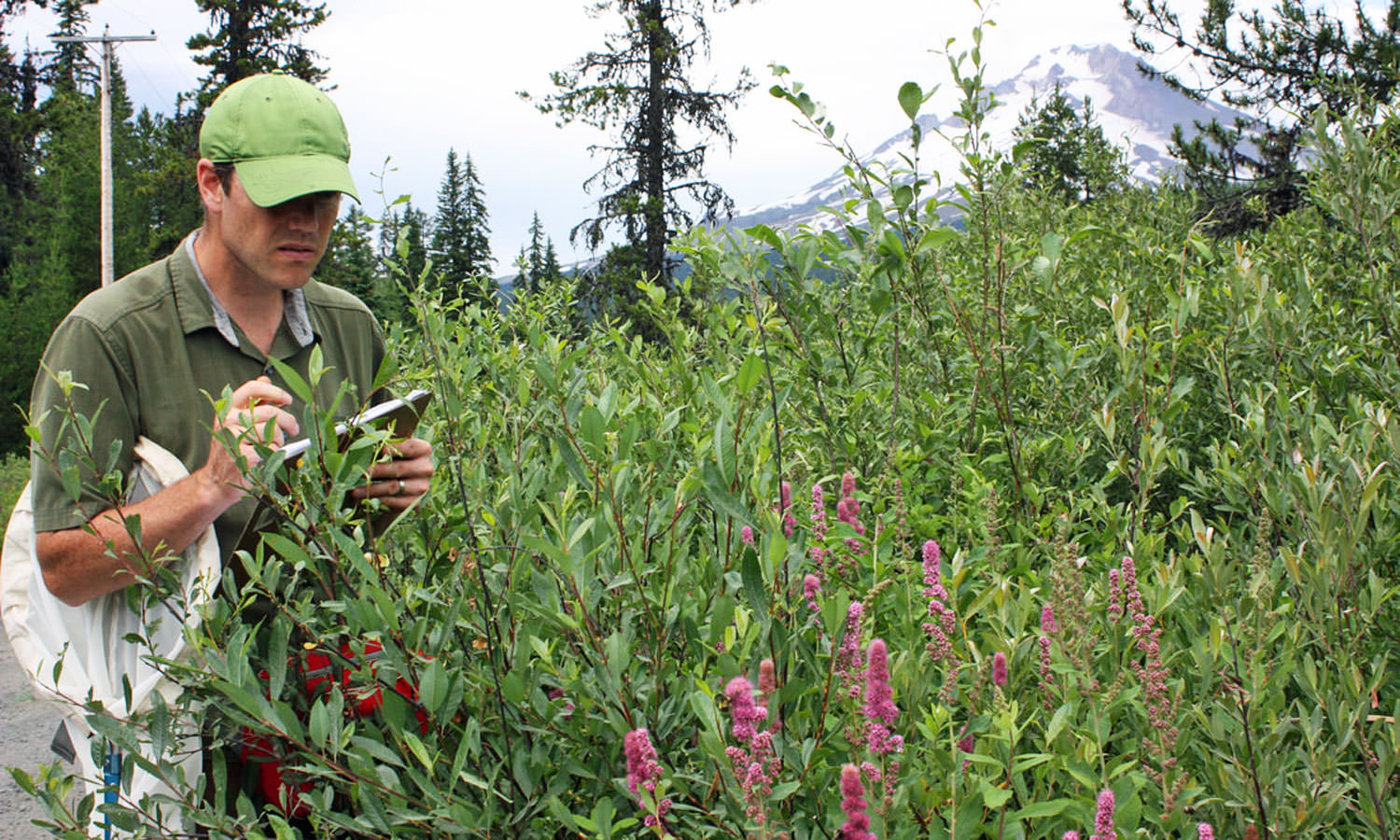
Plight of the pollinators
Bumble bees are declining and no one is sure why, Hatfield says. I’m familiar with the plight of the honeybee, which has made headlines with the mysterious colony collapse disorder and decreasing numbers. I’m a backyard beekeeper and a big fan of this European transplant that sweetens my life. But I’ve never given much thought to our native bee populations. So I was astonished to learn that Oregon is home to an estimated 500 distinct species of bees, nearly 30 of which are bumble bees. Moreover, bumble bees are directly responsible for pollinating much of the food we eat, including Oregon’s signature blueberry and cranberry crops as well as the beloved tomato. Bumble bees also pollinate wildflowers — lupine, goldenrod, aster — which, in turn, provide food for birds and other animals in the ecosystem.
Scientists attribute bumble bees’ decline to things like habitat loss, pesticide use, climate change and overgrazing, as well as competition with honeybees and commercial pollinators. The atlas project highlights three species of particular concern for Oregon — the western, Morrison’s and Suckely cuckoo bumble bees. Their vulnerability, Hatfield says, is a canary in the coalmine. The western bumble bee, for example, was once one of the most common in Portland and Hood River but hasn’t been seen since the 1990s.
“The fact that a really broadly distributed common animal has rapidly disappeared from part of the terrain is indicative that something is not normal,” he says. “It’s not some rare species. The fact that it was so common and now gone is worrisome.”
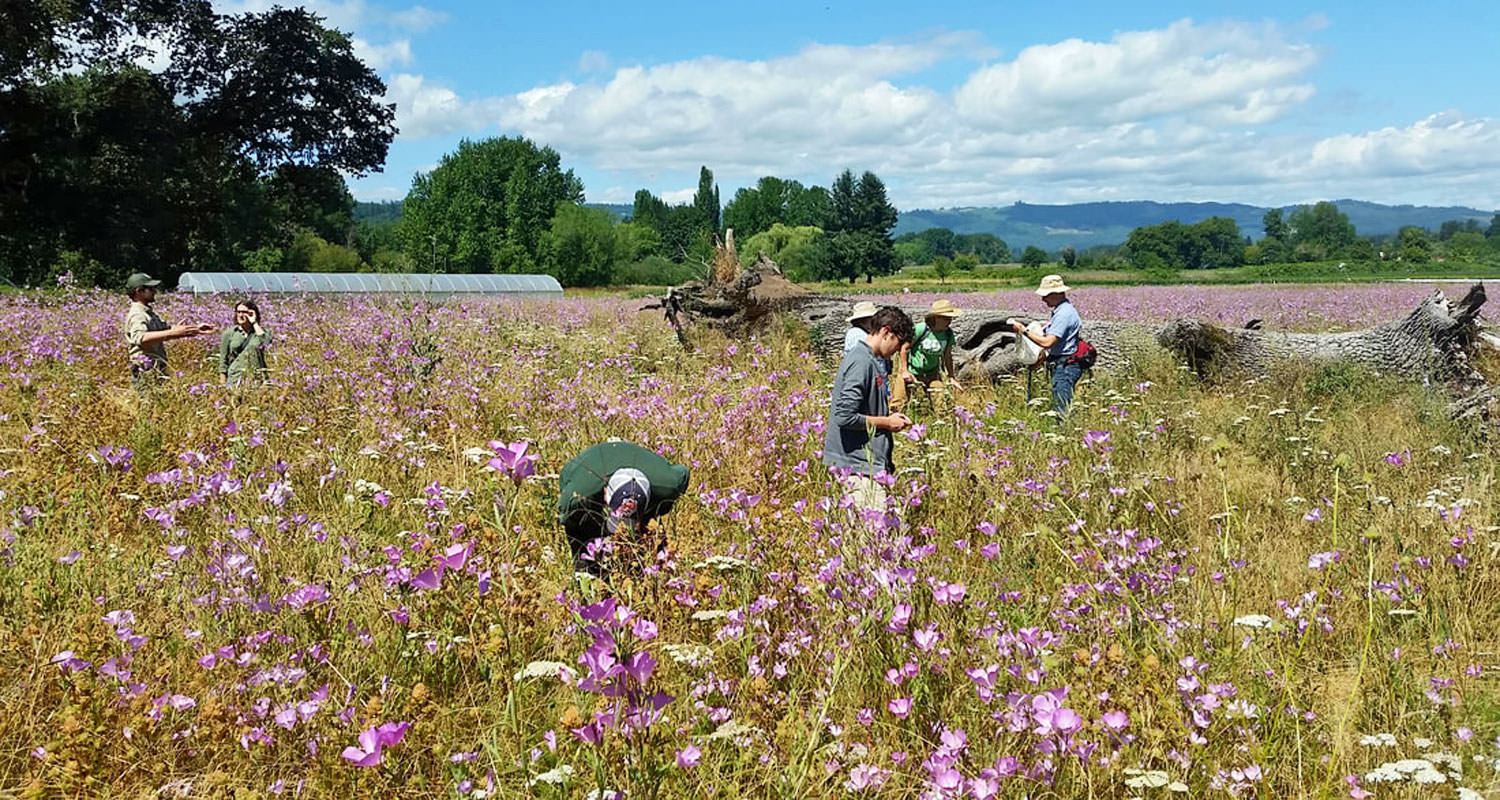
Citizen scientists
By better understanding the landscapes bumble bees live in, project organizers can make effective land management recommendations to state and federal agencies about improving habitat. That’s where the atlas project comes in. A visit to the website shows Oregon, Washington and Idaho divided up into 528 grid cells (195 of which are in Oregon) — each measuring 50 kilometers square. By adopting a grid, each volunteer commits to visiting at least twice by the end of August 2019.
Using the website’s robust resources — including a training video that’s in the works — citizen scientists like me will document bumble bee sightings with photos, observation notes and habitat assessments. Hatfield emphasizes people shouldn’t be intimidated by the idea of identifying bee species because scientists will confirm the data. Those who can’t commit to a grid can still participate by submitting occasional bumble bee sightings and photos. All you need is a healthy curiosity about the natural world and a smart phone.
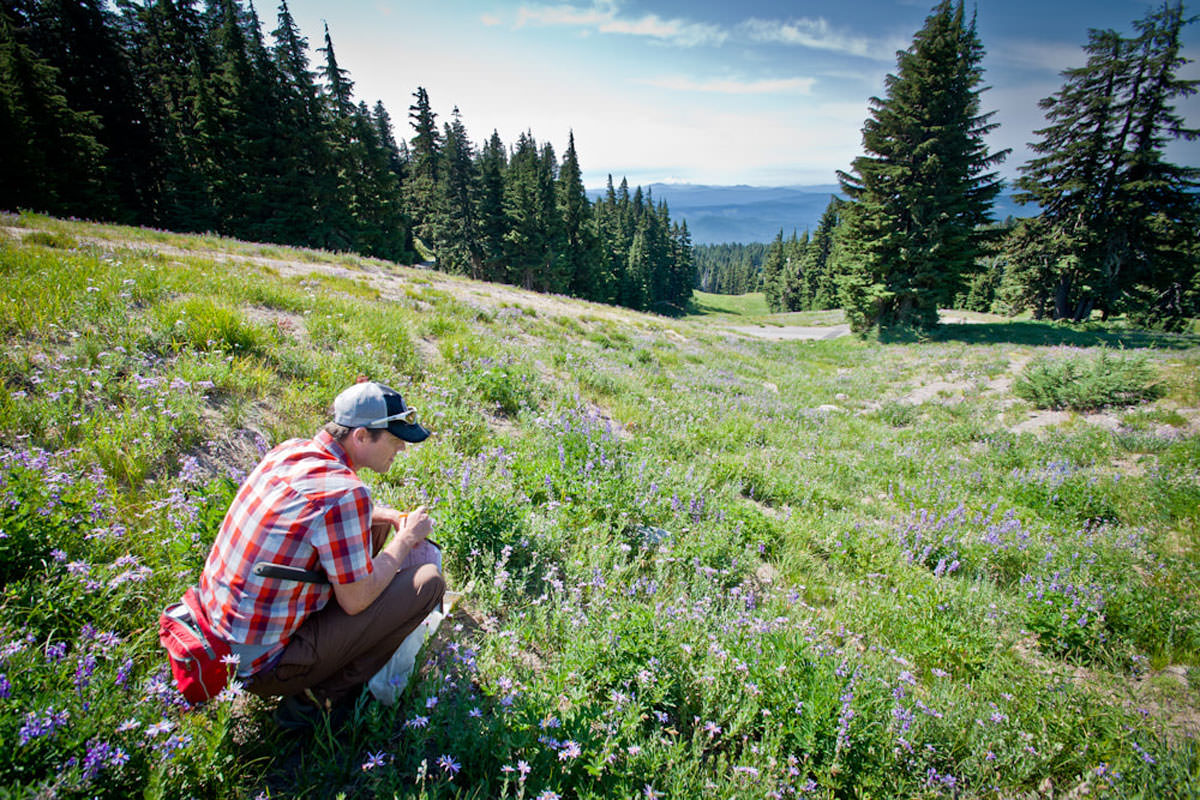
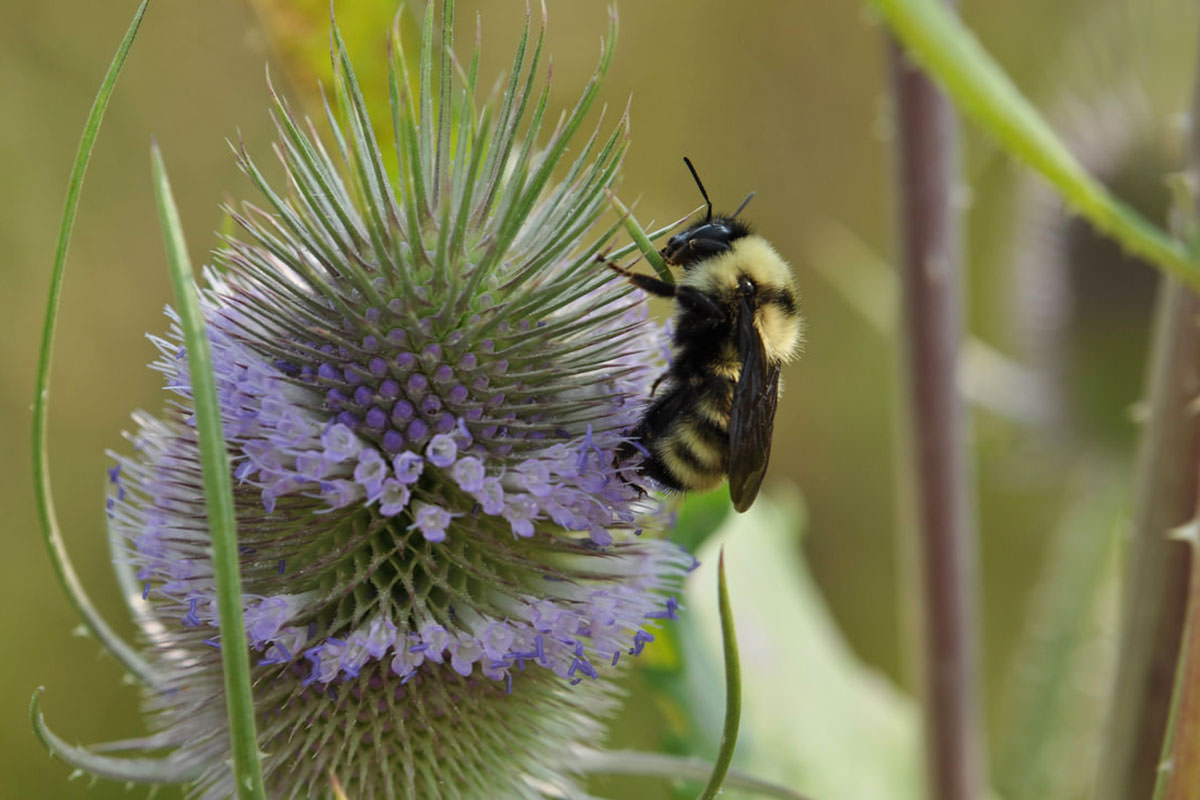
Before I’ve even visited my adopted grid cell, OR_34, I’m hooked. I read how queens overwinter alone. I read about their large, soft bodies, the pollen baskets on their legs and their fuzzy fur, which helps them regulate body temperature and survive in alpine climates. I learn that their colony size is rather small — 50 to 500 compared to the 40,000 honeybees in my back yard hive. I learn about how the queen leaves her hibernation spot in spring to search for a nest and incubates the offspring that will become her workforce. In all of this I’m slowly absorbing the fact that within their ecosystem, these little creatures help feed everything from birds and bears to humans.
Hatfield points out that in addition to volunteerism, the project offers a great excuse to get to know Oregon’s beautiful wild spaces. He urges people to pick a spot on the grid and explore.
“Get outside, plan an adventure and go see a new part of the state,” he says. “There are so many beautiful places out there that you have never been to. You can pick a corner of the map and use it as an incentive to explore.”
He’s right; the opportunity to choose presents many temptations. I looked at grid spots in the Cascade Range, the Blue Mountains and the Great Sand Desert. I ultimately picked OR_34 because it’s close to home and I’d like to encourage friends and family to come with me during my season as a citizen scientist. Lucky me, I’ve got Mt. Hood, the Hood and Sandy rivers and miles of forest to explore. I’m already planning hikes and picnics to various spots on my map.
On my first day out, the project has already changed how I experience the woods. Everything slows down as I absorb the wildflowers, the moss-laden trees and a flock of thrush calling overhead. The late spring wind picks up sending ripples across the green waters of Wahtum Lake. Today is likely too cold for any bumble bee sighting, I realize. I’ll return on a warmer day to check the trail for the summer blooming wildflowers. For the time being, I’ll keep my ear tuned to for that distinct low murmur of these hard working creatures in my garden and around town. I believe Hatfield when he says effect is likely to resonate past the project too.
“Most people think of wildlife as deer or elk. Once you get to know these species of bumble bee you will start to recognize them and you will see them everywhere. All of a sudden your back yard becomes a safari. They are really beautiful animals and fun to watch.”
For more information about how to become a citizen scientist and part of the Pacific Northwest Bumble Bee Atlas project, visit the website.
